Businesses looking to move to the cloud essentially have three options: contract with multiple cloud providers – all with varying platforms, move to a hybrid setup with some combination of cloud providers and their own data centers, or dive right in and commit to a single cloud provider.
Three companies (and household names) – Spotify, Netflix and Coca-Cola – took the leap and reaped huge benefits from their foray into harnessing the power of cloud computing.
Spotify Scales Its Streaming Music Business with Google Cloud
Spotify was able to reduce its costs by 60% by moving to Google Cloud Platform (GCP), using the platform to power its music streaming service. This has helped Spotify to scale its business and deliver a high-performance, real-time experience to its users. Spotify has also been able to reduce its costs by using Google Cloud’s cost-effective pricing.
In a 2019 blog post, Spotify’s Chief Architect and VP of Engineering Niklas Gustavsson said in 2015 when the company started researching what a cloud strategy would look like for the streaming music business. The choice became clear on which way to go when looking at the “three options.”
“Having evaluated the potential outcomes, we decided on the third option, an ‘all-in’ move to just one provider where we could build a deeper working relationship that went beyond simply offloading infrastructure to a third party. This led us to commit to the Google Cloud Platform (GCP).”
The key takeaways and wins for Spotify were clear: The cloud allowed Spotify to move away from on-premise infrastructure and improve its tech stack. Innovation occurs faster with teams able to create new services and find better ways to build solutions for its massive user base, capitalizing on machine learning, data processing and other cloud tools that speeds up the ability to scale.
The success with Spotify is not lost on Google Cloud and its published case study reveals some of the big wins achieved when in 2016 the company moved 1,200 only services and data processing DAGs (directed acyclic graphs) and 20,000 daily job executions from Spotify’s data centers to the cloud. Here are some highlights from the case study:
By employing automated, developer-friendly services on Google Cloud, Spotify’s teams could focus better on its core business, while gaining access to services, like data analytics, on which it could grow.
“Google Cloud removes a lot of the operational complexity from our ecosystem. That frees up time,” said Tyson Singer, vice president of technology and platform at Spotify. “We can iterate quicker on key needs, like data insights and machine learning. Having infrastructure managed for us, with the lower-value details taken away, streamlines our ability to concentrate on what’s important to our users and give them the experiences they know and love about Spotify.”
Effective data use that preserves customer privacy even as the services scale is another core part of the process. Some of that increase is from a growing user base, but even more is from effective understanding of the customer experience on Spotify. The engineering brilliance that matches data-driven insights with improved customer experiences is increasingly easier and faster on the cloud.
Robust building blocks that exist on top of core data storage, computing, and network services help take away much of the backend hassle on the way to new product creation. Spotify’s technology leaders point to the particular importance of BigQuery, the Google Cloud data analysis tool, as well as Pub/Sub, for faster software application development. Dataflow, for real-time and historical data analysis, has also been particularly useful.
Netflix Increases Performance by 20% With AWS
Netflix was able to improve its performance by 20% by moving to AWS. Netflix uses Amazon Web Services (AWS) to deliver its streaming service to millions of users around the world. AWS’s high performance and scalability have been essential to Netflix’s success. Like Spotify, Netflix has also been able to reduce its costs by using AWS’s pay-as-you-go pricing.
Netflix is the world’s leading internet television network, with more than 200 million members in more than 190 countries enjoying 125 million hours of TV shows and movies each day. Netflix uses AWS for nearly all its computing and storage needs, including databases, analytics, recommendation engines, video transcoding, and more – hundreds of functions that in total use more than 100,000 server instances on AWS.
Just as Google Cloud takes pride in its work with Spotify, AWS openly shares Netflix’s success using its platform to provide a wide variety of TV shows, movies, and documentaries to hundreds of millions of members across the globe in over 30 languages.
“Netflix can move faster to develop new stories and better ways of sharing them with its members around the world. Netflix relies on AWS to help it innovate with speed and consistently deliver best-in-class entertainment. AWS provides Netflix with compute, storage, and infrastructure that allow the company to scale quickly, operate securely, and meet capacity needs anywhere in the world,” the case study reads. “Moreover, Netflix, a leading content producer, has used AWS to build a studio in the cloud. This virtual studio enables Netflix to engage top artistic talent, no matter the location, and Netflix artists and partners have the freedom to collaborate without technological or geographical barriers.”
Some examples of Netflix using AWS:
Netflix uses AWS to build flexible, remote workstations to attract and retain creative talent that can now collaborate from virtually anywhere. Netflix is dedicated to facilitating collaboration among artists and content creators around the globe through remote workstations and offering a seamless content-creation experience closer to artists. The company did so by deploying its visual effects studio closer to artists using AWS Local Zones, helping it achieve single-digit millisecond latency and keep its remote workstations running smoothly.
Production of the fourth season of Netflix’s episodic drama “The Crown” faced unexpected challenges, as the world went into lockdown for the COVID-19 pandemic just as post-production VFX work was slated to begin. By adopting a cloud-based workflow on AWS, Netflix’s in-house VFX team of 10 artists was able to seamlessly complete more than 600 VFX shots for the season’s 10-episode run in just 8 months, all while working remotely.
Before migrating to Amazon Simple Email Service (Amazon SES), Netflix maintained an in-house solution for sending email. This solution carried its own operational overhead, including running dedicated servers with email-delivery software and optimizing email-send practices for each Internet Service Provider. With Amazon SES, Netflix had an email solution that was flexible, affordable, highly scalable, and that had global reach.
Coca-Cola Uses Microsoft Azure to Cut Costs
Coca-Cola is using Microsoft Azure’s cloud platform to achieve success in a number of ways. The soft drink giant has been able to reduce its IT costs taking advantage of the platform’s pay-as-you-go pricing model.
Azure is a scalable platform, so Coca-Cola can easily add or remove resources as needed. This is important for a business that is constantly growing. Azure is a secure platform, which is important for a global, multi-national company handling sensitive data. Azure offers a number of security features, such as encryption and access control, to protect Coca-Cola’s data.
Azure is an innovative platform, which means that Coca-Cola can use it to develop new products and services. Azure offers a number of machine learning tools and artificial intelligence resources to help the company innovate.
Here are some specific examples of how Coca-Cola is using Azure to achieve success:
Coca-Cola UNITED: Coca-Cola UNITED is a bottling company that is using Azure to improve its operations. Azure is being used to track inventory, manage deliveries, and forecast demand. This has helped Coca-Cola UNITED to reduce costs and improve efficiency.
Coca-Cola Freestyle: Coca-Cola Freestyle is a self-service soda fountain that is using Azure to deliver a personalized experience to customers. Azure is being used to track customer preferences, recommend drinks, and manage inventory. This has helped Coca-Cola Freestyle to increase customer satisfaction.
Coca-Cola Racing: Coca-Cola Racing is a NASCAR team that is using Azure to improve its performance. Azure is being used to analyze data from race cars, predict weather conditions, and optimize pit stops. This has helped Coca-Cola Racing to win races and improve its standings.










